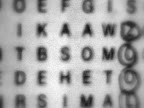My analysis: Metro operator likely hit brakes at least 3.8 seconds before collision (and possibly way earlier)
Alright, I haven't seen any media outlet do the kinematic equations using the numbers we have so far on this, so I've done it.
Known:
- Metro trains, generally and in that specific section of track, are not supposed to exceed 59 mph (86.533 feet/sec)
- The NTSB's 1996 report on the Metro collision at Shady Grove reports that the maximum braking, or emergency braking acceleration is: 3.2 mph/sec, +/- .2 mph/sec (4.693 feet/second per second)
- Investigators say the brakes appear to have been operated 300 to 400 feet before the collision point.
If 300 foot braking distance, final speed was 46.6 mph and time to collission was 3.87 seconds.
If 400 foot braking distance, final speed was 41.7 mph and time to collission was 5.42 seconds.
Please note, this is all somewhat approximate, and this is based solely on the 3.2 mph/sec deceleration estimate -- something that's obviously not precise. I suppose deceleration could have been a bit higher than normal given the relativley empty train.
Also, again, these are maximums -- using the 59 mph speed, which I must reiterate, I think is unlikely.
Now, 41.7 mph is easily enough for one car to jump over, or "telescope" over another. In the 1996 Shady Grove crash, the train was estimated to be going 22-29 mph. In the 2004 Woodley Park crash, the train was estimated to be going 37 mph. In both cases, the telescoping was, at least at first glance, somewhat similar to in this case.
(I got those numbers from Matt Johnson's comprehensive post at Greater Greater Washington exploring the safety differences between the different series of Metro rail cars. See also his earlier post explaining the systems that are supposed to keep trains seperated).
But in conclusion, it is unlikely that the operator did not hit the brakes at least a few seconds before the collision. If the train had been traveling slower than 59 mph, and I think it probably was going much slower, then the braking time could easily have been several seconds longer than that. Given the right curve in the track, and the operator sitting on the right side of the train, it's unclear that the operator would even have been able to see the train ahead all that much more than several hundred feet in advance, no matter how much she was paying attention.


0 Comments:
Post a Comment
<< Home